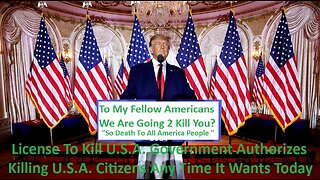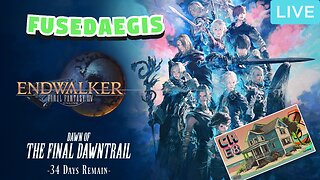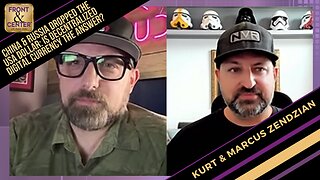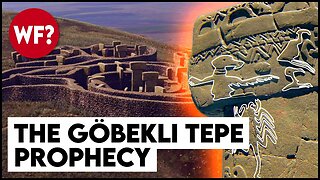USCIS 100 Questions and Answers Challenge U.S.A. Citizenship Civic Test Americana
A citizenship test is a requirement for individuals seeking U.S. citizenship via naturalization. The purpose of the test is to determine if the foreign national has adequate knowledge of the United State’s history, laws, government, and more. In this post, we’ll go over 100 common citizenship test questions and answers to be acquainted with. During the exam, the immigration officer will ask you up to 10 questions from the list of 100 and you must answer at least 6 of them correctly in order to pass the civics portion of the naturalization test.
Find out the Difference Between Citizenship and Nationality.
Citizenship Test Structure
The citizenship test is made up of two parts – the English Test and the Civics Test.
English Test
The English test will assess your ability to:
Read: You will need to read one out of three sentences aloud accurately to demonstrate your proficiency. Some words you may be asked to read include the names of past or current presidents, places, verbs, etc. See this list of the reading vocabulary for the naturalization test;
Write: You will need to write one out of three sentences accurately to demonstrate your English writing proficiency. Many of these words will be similar, if not the ones on the vocabulary word list linked above. If you happen to misspell some of the words it is not an automatic failure, so don’t worry about that. You also have some leeway for grammar or punctuation errors. Be sure to write your answers legibly.
Speak: You will need to answer questions the immigration officer asks you.
If at any point during one of the sections above you need clarification on something, do not hesitate to ask the immigration officer. They can repeat questions or words if necessary for you.
Learn more about U.S. Citizenship Interview.
Civics Test
The civics test is where you will need to answer at least 6 out of 10 questions correctly to pass. Below are 100 of the possible civics questions you may receive. For individuals who are 65 years old or older and have been a legal permanent resident of the United States for 20 or more years, you may study just the questions that have been marked with an asterisk.
IMPORTANT: DHS published a notice in the Federal Register announcing plans to conduct a trial of proposed changes to the current nationalization test with volunteers from community-based organizations (CBOs). USCIS will hold a virtual engagement on March 3, 2023, to provide an overview of the proposed changes and the trial test.
1. What is the supreme law of the land?
Correct Answer: The Constitution
Additional details: The U.S. Constitution was written in 1787. It establishes the framework for the federal government and outlines the powers and limitations of its branches: the legislative, executive, and judicial. The Constitution also includes a Bill of Rights, which consists of the first ten amendments. These amendments protect fundamental rights and freedoms, such as the freedom of speech and religion, the right to bear arms, and the right to a fair trial.
2. What does the Constitution do?
Correct Answers:
▪ sets up the government
▪ defines the government
▪ protects basic rights of Americans
3. The idea of self-government is in the first three words of the Constitution. What are these words?
Correct Answer: We the People
Additional details: These words reiterate the fact that the U.S. government is structured in such a way that the government is ruled by the people.
4. What is an amendment?
Correct Answers:
a change (to the Constitution) or;
an addition (to the Constitution)
Additional details: The U.S. Constitution can be changed or added to. In fact, did you know it has been amended 27 times?
5. What do we call the first ten amendments to the Constitution?
Correct Answer: the Bill of Rights
Additional details: The Bill of Rights outlines certain fundamental rights and protections for American citizens, such as freedom of speech, religion, and the press, the right to bear arms, the right to a fair trial, and protection against unreasonable searches and seizures.
6. What is one right or freedom from the First Amendment?*
Correct Answers:
▪ speech
▪ religion
▪ assembly
▪ press
▪ petition the government
Additional details: The First Amendment states, “Congress shall make no law respecting an establishment of religion, or prohibiting the free exercise thereof; or abridging the freedom of speech, or of the press; or the right of the people peaceably to assemble, and to petition the Government for a redress of grievances.”
7. How many amendments does the Constitution have?
Correct Answer: 27
8. What did the Declaration of Independence do?
Correct Answers:
▪ announced our independence (from Great Britain)
▪ declared our independence (from Great Britain)
▪ said that the United States is free (from Great Britain)
9. What are two rights in the Declaration of Independence?
Correct Answers:
▪ life
▪ liberty
▪ pursuit of happiness
Additional details: The Declaration of Independence states that all people have certain “unalienable rights,” such as life, liberty, and the pursuit of happiness and that governments are established to protect these rights.
10. What is freedom of religion?
Correct Answer: You can practice any religion, or not practice a religion.
Additional details: The First Amendment gives you the right to choose or not choose a religion and the right to change that at your discretion.
11. What is the economic system in the United States?*
Correct Answers:
▪ capitalist economy
▪ market economy
Additional details: Also known as a free market, a capitalist economy, is one where private individuals and businesses own and control the means of production, distribution, and exchange of goods and services. In this type of economy, the production of goods and services is driven by profit, and prices are determined by supply and demand.
12. What is the “rule of law”?
Correct Answers:
▪ Everyone must follow the law
▪ Leaders must obey the law
▪ Government must obey the law
▪ No one is above the law
13. Name one branch or part of the government declaration of independence citizenship test
Correct Answers:
▪ Congress
▪ legislative
▪ President
▪ executive
▪ the courts
▪ judicial
Additional details: The three branches of government are the Legislative (composed of the Congress, which consists of the Senate and the House of Representatives), the Executive (led by the President and includes the Vice President and the Cabinet), and the Judicial (composed of the Supreme Court and other federal courts).
14. What stops one branch of government from becoming too powerful?
Correct Answers:
▪ checks and balances
▪ separation of powers
15. Who is in charge of the executive branch?
Correct Answer:
▪ the President
Additional details: The executive branch is led by the U.S. President and includes the Vice President and the Cabinet.
16. Who makes federal laws?
Correct Answers:
▪ Congress
▪ Senate and House (of Representatives)
▪ (U.S. or national) legislature
Additional details: The legislative branch (composed of the Congress, which consists of the Senate and the House of Representatives) is the only branch of government that can make new laws or amend existing ones.
17. What are the two parts of the U.S. Congress?*
Correct Answers:
▪ the Senate and House (of Representatives)
18. How many U.S. Senators are there?
▪ one hundred (100)
19. We elect a U.S. Senator for how many years?
Correct Answer:
▪ 6 years
20. Who is one of your state’s U.S. Senators now?*
Correct Answer: Will vary based on which state they reside in.
21. The House of Representatives has how many voting members?
Correct Answer:
▪ 435
Additional details: Each of the members represents a congressional district in one of the 50 states, as well as several non-voting members representing territories and the District of Columbia.
22. We elect a U.S. Representative for how many years?
Correct Answer:
▪ 2 years
23. Name your U.S. Representative.
▪ The correct answers will vary based on where they live. [Residents of territories with nonvoting Delegates or Resident Commissioners may provide the name of that Delegate or Commissioner. Also acceptable is any statement that the territory has no (voting) Representatives in Congress.]
24. Who does a U.S. Senator represent?
Correct Answer:
▪ all people of the state
25. Why do some states have more Representatives than other states?
Correct Answers:
▪ (because of) the state’s population
▪ (because) they have more people
▪ (because) some states have more people
26. We elect a President for how many years?
Correct Answer:
▪ 4 years
Additional details: An election happens every four years and a president is allowed to serve for a total of 2 terms.
27. In what month do we vote for President?*
Correct Answer:
▪ November
Additional details: The election takes place on the first Tuesday in November.
28. What is the name of the President of the United States now?*
Correct Answer:
As of March 2023, the sitting president is Joe Biden.
29. What is the name of the Vice President of the United States now?
Correct Answer:
As of March 2023, the current Vice President is Kamala Harris.
30. If the President can no longer serve, who becomes President?
Correct Answer:
▪ the Vice President
Additional details: If the President dies or resigns, the U.S. VP takes over office.
31. If both the President and the Vice President can no longer serve, who becomes President?
Correct Answer:
▪ the Speaker of the House
32. Who is the Commander in Chief of the military?
Correct Answer:
▪ the President
Additional details: Not only is the President considered the Chief Executive, but he/she is considered the Commander in Chief of the Army and Navy.
33. Who signs bills to become laws?
▪ the President
Additional details: The bill must be first passed by Congress, then the President is responsible for signing it into law.
34. Who vetoes bills?
Correct Answer:
▪ the President
Additional details: The President holds the authority to veto a bill (prevent it from going into effect).
35. What does the President’s Cabinet do?
Correct Answer:
▪ advises the President
Additional details: The Cabinet consists of the Vice President and the heads of 15 executive departments. The heads of the departments are known as Cabinet Secretaries.
36. What are two Cabinet-level positions?
Correct Answers:
▪ Secretary of Agriculture
▪ Secretary of Commerce
▪ Secretary of Defense
▪ Secretary of Education
▪ Secretary of Energy
▪ Secretary of Health and Human Services
▪ Secretary of Homeland Security
▪ Secretary of Housing and Urban Development
▪ Secretary of the Interior
▪ Secretary of Labor
▪ Secretary of State
▪ Secretary of Transportation
▪ Secretary of the Treasury
▪ Secretary of Veterans Affairs
▪ Attorney General
▪ Vice President
37. What does the judicial branch do?
Correct Answers:
▪ reviews laws
▪ explains laws
▪ resolves disputes (disagreements)
▪ decides if a law goes against the Constitution
Additional details: The Judicial Branch is responsible for interpreting laws and administering justice in the United States.
38. What is the highest court in the United States?
Correct Answer:
▪ the Supreme Court
39. How many justices are on the Supreme Court?
Correct Answer:
Answers may vary depending on when the question is being asked. As of March 2023, there are nine justices.
40. Who is the Chief Justice of the United States now?
Correct Answer: Answers may vary depending on when the question is being asked. As of March 2023, the Chief Justice of the United States is John G. Roberts.
41. Under our Constitution, some powers belong to the federal government. What is one power of the federal government?
Correct Answer:
▪ to print money
▪ to declare war
▪ to create an army
▪ to make treaties
42. Under our Constitution, some powers belong to the states. What is one power of the states?
Correct Answer:
▪ provide schooling and education
▪ provide protection (police)
▪ provide safety (fire departments)
▪ give a driver’s license
▪ approve zoning and land use
43. Who is the Governor of your state now?
Correct Answer:
Answers may vary depending on where you live.
44. What is the capital of your state?*
Correct Answer:
Answers may vary depending on where you live.
45. What are the two major political parties in the United States?*
Correct Answer:
▪ Democratic and Republican
46. What is the political party of the President now?
Correct Answer:
Answers may vary depending on when the question is asked but as of March 2023, Biden’s political party is Democrat.
47. What is the name of the Speaker of the House of Representatives now?
Correct Answer:
Answers may vary depending on when the question is asked but as of March 2023, the Speaker of the House of Representatives is Kevin McCarthy.
48. There are four amendments to the Constitution about who can vote. Describe one of them.
Correct Answers:
▪ Citizens eighteen (18) and older (can vote).
▪ You don’t have to pay (a poll tax) to vote.
▪ Any citizen can vote. (Women and men can vote.)
▪ A male citizen of any race (can vote).
49. What is one responsibility that is only for United States citizens?*
Correct Answers:
▪ serve on a jury
▪ vote in a federal election
50. Name one right only for United States citizens.
Correct Answers:
▪ vote in a federal election
▪ run for federal office
51. What are two rights of everyone living in the United States?
Correct Answers:
▪ freedom of expression
▪ freedom of speech
▪ freedom of assembly
▪ freedom to petition the government
▪ freedom of religion
▪ the right to bear arms
52. What do we show loyalty to when we say the Pledge of Allegiance?
Correct Answers:
▪ the United States
▪ the flag
Additional details: The Pledge of Allegiance is a symbol of American identity and values and is a reminder of the responsibilities and duties that come with being a citizen of the United States.
53. What is one promise you make when you become a United States citizen?
▪ give up loyalty to other countries
▪ defend the Constitution and laws of the United States
▪ obey the laws of the United States
▪ serve in the U.S. military (if needed)
▪ serve (do important work for) the nation (if needed)
▪ be loyal to the United States
54. How old do citizens have to be to vote for President?*
Correct Answer:
▪ 18 and older
55. What are two ways that Americans can participate in their democracy?
Correct Answers:
▪ vote
▪ join a political party
▪ help with a campaign
▪ join a civic group
▪ join a community group
▪ give an elected official your opinion on an issue
▪ call Senators and Representatives
▪ publicly support or oppose an issue or policy
▪ run for office ▪ write to a newspaper
56. When is the last day you can send in federal income tax forms?*
Correct Answer:
▪ April 15
57. When must all men register for the Selective Service?
Correct Answers:
▪ at age eighteen (18)
▪ between eighteen (18) and twenty-six (26)
58. What is one reason colonists came to America?
Correct Answers:
▪ freedom
▪ political liberty
▪ religious freedom
▪ economic opportunity
▪ practice their religion
▪ escape persecution
Additional details: There were many reasons colonists migrated to America ranging from political freedom and escaping persecution to the vast opportunities financially.
59. Who lived in America before the Europeans arrived?
Correct Answers:
▪ American Indians
▪ Native Americans
Additional details: Prior to the Europeans setting in America, Native American tribes were found throughout the continent.
60. What group of people was taken to America and sold as slaves?
Correct Answers:
▪ Africans
▪ people from Africa
61. Why did the colonists fight the British?
Correct Answers:
▪ because of high taxes (taxation without representation)
▪ because the British army stayed in their houses (boarding, quartering)
▪ because they didn’t have self-government
Additional details: The American Revolutionary War (1775-1783) resulted in the independence of the United States from British rule.
62. Who wrote the Declaration of Independence?
Correct Answer:
▪ (Thomas) Jefferson
Additional details: The Declaration of Independence, which announced the separation of the thirteen British North American colonies from Great Britain, was drafted by Thomas Jefferson and adopted by Congress on July 4, 1776.
63. When was the Declaration of Independence adopted?
Correct Answer:
▪ July 4, 1776
64. There were 13 original states. Name three.
Correct Answers:
▪ New Hampshire
▪ Massachusetts
▪ Rhode Island
▪ Connecticut
▪ New York
▪ New Jersey
▪ Pennsylvania
▪ Delaware
▪ Maryland
▪ Virginia
▪ North Carolina
▪ South Carolina
▪ Georgia
65. What happened at the Constitutional Convention?
Correct Answers:
▪ The Constitution was written.
▪ The Founding Fathers wrote the Constitution
Additional details: The purpose of the Constitutional Convention was to redesign the system of government. The convention was from May 14-September 17, 1787.
66. When was the Constitution written?
Correct Answer:
▪1787
Additional details: It was written during the Constitutional Convention.
67. The Federalist Papers supported the passage of the U.S. Constitution. Name one of the writers.
Correct Answers:
▪ (James) Madison
▪ (Alexander) Hamilton
▪ (John) Jay
▪ Publius
Additional details: The Federalist Papers are a collection of 85 essays to support the ratification of the United States Constitution.
68. What is one thing Benjamin Franklin is famous for?
Correct Answers:
▪ U.S. diplomat
▪ oldest member of the Constitutional Convention
▪ first Postmaster General of the United States
▪ writer of “Poor Richard’s Almanac”
▪ started the first free libraries
69. Who is the “Father of Our Country”?
Correct Answer:
▪ (George) Washington
Additional details: Not only was he the first president but he also commanded the army during the American Revolution and was also a leader during the Constitutional Convention.
70. Who was the first President?*
Correct Answer:
▪ (George) Washington
Additional details: Washington held office from 1789-1797.
71. What territory did the United States buy from France in 1803?
Correct Answers:
▪ the Louisiana Territory
▪ Louisiana
Additional details: The U.S. paid $15 million to France for the territory.
72. Name one war fought by the United States in the 1800s.
Correct Answers:
▪ War of 1812
▪ Mexican-American War
▪ Civil War
▪ Spanish-American War
73. Name the U.S. war between the North and the South.
Correct Answers:
▪ the Civil War
▪ the War between the States
Additional details: The Civil War lasted from 1861-1865 and was between the Confederate States of America and the Union Army.
74. Name one problem that led to the Civil War.civil rights
Correct Answers:
▪ slavery
▪ economic reasons
▪ states’ rights
75. What was one important thing that Abraham Lincoln did?*
Correct Answers:
▪ freed the slaves (Emancipation Proclamation)
▪ saved (or preserved) the Union
▪ led the United States during the Civil War
76. What did the Emancipation Proclamation do?
Correct Answers:
▪ freed the slaves
▪ freed slaves in the Confederacy
▪ freed slaves in the Confederate states
▪freed slaves in most Southern states
Additional details: The Emancipation Proclamation was issued by President Lincoln and went into effect in 1863.
77. What did Susan B. Anthony do?
Correct Answers:
▪ fought for women’s rights
▪ fought for civil rights
Additional details: Susan B. Anthony played a pivotal role in the women’s suffrage movement in the United States.
78. Name one war fought by the United States in the 1900s.*
Correct Answers:
▪ World War I
▪ World War II
▪ Korean War
▪ Vietnam War
▪ (Persian) Gulf War
79. Who was President during World War I?
▪ (Woodrow) Wilson
Additional details: Wilson was president from 1913-1921.
80. Who was President during the Great Depression and World War II?
Correct Answer:
▪ (Franklin) Roosevelt
Additional details: Roosevelt was president from 1933-1945.
81. Who did the United States fight in World War II?
Correct Answer:
▪ Japan, Germany, and Italy
82. Before he was President, Eisenhower was a general. What war was he in?
Correct Answer:
▪ World War II
Additional details: Eisenhower was the 34th president.
83. During the Cold War, what was the main concern of the United States?
Correct Answer:
▪ Communism
Additional details: This war was between the Soviet Union and the U.S.
84. What movement tried to end racial discrimination?
Correct Answer:
▪ civil rights (movement)
85. What did Martin Luther King, Jr. do?*
Correct Answers:
▪ fought for civil rights
▪ worked for equality for all Americans
Additional details: Martin Luther King, Jr. was known for his leadership in the American civil rights movement and an advocate for racial equality with the goal of ending segregation and discrimination.
86. What major event happened on September 11, 2001, in the United States?
Correct Answer:
▪ Terrorists attacked the United States.
Additional details: The 9/11 attack was carried out by a Muslim extremist group in New York City.
87. Name one American Indian tribe in the United States.
Correct Answers:
▪ Cherokee
▪ Navajo
▪ Sioux
▪ Chippewa
▪ Choctaw
▪ Pueblo
▪ Apache
▪ Iroquois
▪ Creek
▪ Blackfeet
▪ Seminole
▪ Cheyenne
▪ Arawak
▪ Shawnee
▪ Mohegan
▪ Huron
▪ Oneida
▪ Lakota
▪ Crow
▪ Teton
▪ Hopi
▪ Inuit
88. Name one of the two longest rivers in the United States.
Correct Answers:
▪ Missouri (River)
▪ Mississippi (River)
89. What ocean is on the West Coast of the United States?
Correct Answer:
▪ Pacific (Ocean)
90. What ocean is on the East Coast of the United States?
Correct Answer:
▪ Atlantic (Ocean)
91. Name one U.S. territory.
Correct Answers:
▪ Puerto Rico
▪ U.S. Virgin Islands
▪ American Samoa
▪ Northern Mariana Islands
▪ Guam
92. Name one state that borders Canada.
Correct Answers:
▪ Maine
▪ New Hampshire
▪ Vermont
▪ New York
▪ Pennsylvania
▪ Ohio
▪ Michigan
▪ Minnesota
▪ North Dakota
▪ Montana
▪ Idaho
▪ Washington
▪ Alaska
93. Name one state that borders Mexico.
Correct Answers:
▪ California
▪ Arizona
▪ New Mexico
▪ Texas
94. What is the capital of the United States?*
Correct Answer:
▪ Washington, D.C.
95. Where is the Statue of Liberty?*
Correct Answers:
▪ New York (Harbor)
▪ Liberty Island
[Also acceptable are New Jersey, near New York City, and on the Hudson (River).]
Additional details: The Statue was a gift to the U.S. from France. It symbolizes justice and freedom.
96. Why does the flag have 13 stripes?
Correct Answers:
▪ because there were 13 original colonies
▪ because the stripes represent the original colonies
97. Why does the flag have 50 stars?*
Correct Answers:
▪ because there is one star for each state
▪ because each star represents a state
▪ because there are 50 states
98. What is the name of the national anthem?
Correct Answer:
▪ The Star-Spangled Banner
99. When do we celebrate Independence Day?*
Correct Answer:
▪ July 4
Additional details: This is the day the Continental Congress adopted the Declaration of Independence, separating itself from British rule.
100. Name two national U.S. holidays.
Correct Answers:
▪New Year’s Day
▪ Martin Luther King, Jr. Day
▪ Presidents’ Day
▪ Memorial Day
▪ Independence Day
▪ Labor Day
▪ Columbus Day
▪ Veterans Day
▪ Thanksgiving
▪ Christmas
Citizenship vs. Nationality - What’s the Difference?
Often people confuse the difference between citizenship vs. nationality when describing where they come from and their inherited cultural background. When it comes to immigration matters it’s essential to understand the difference between the two terms. In this post, we’ll explore not only citizenship vs. nationality but also the difference between nationality vs. ethnicity and the different paths to citizenship in the United States.
Difference between Citizenship vs. Nationality
The word nationality refers to where you are born. A country’s government grants citizenship when specific legal requirements are met.
Citizenship can be seen as a political status because it indicates which country recognizes you as a citizen. Nationality has more to do with the relationship between you and your place of birth and can often be seen as ethnic or racially related. Citizenship can fluctuate since you can be a citizen of multiple places simultaneously and can also renounce your citizenship to a country. On the other hand, you cannot change nationality because it’s innate.
In the United States, people born in the country are citizens. The 14th Amendment, ratified on July 9, 1868, states, “All persons born or naturalized in the United States and subject to the jurisdiction thereof, are citizens of the United States and of the State wherein they reside.”
U.S. National vs. U.S. Citizen
When it comes to the United States, U.S. citizens are U.S. nationals. Still, not all U.S. nationals are U.S. citizens since U.S. law states a national as “a person owing permanent allegiance to a state” and having “an outlying possession to the United States.”
The best example is U.S. nationals from American Samoa and the Swains Island (part of American Samoa) and individuals born outside of the United States to two U.S. national parents. Likewise, a person born outside of the U.S. to one U.S. national parent and one alien parent. A U.S. national has an “irrevocable right to reside in the territory of the United States without limitation.” A U.S. national can become a citizen via naturalization. It’s important to note that U.S. nationals can’t vote in a United States election or hold office.
Are you considered a non-citizen U.S. national? You are if you are born in one of the following:
Puerto Rico between 1898 and 1917.
Guam between 1898 and 1950
U.S. Virgin Islands between 1917 and 1927
The Philippines between 1898 and 1946
Suppose you were born after the date listed above. In that case, you are now automatically considered a full U.S. citizen, with the exception of the Philippines since it is an independent country and never afforded U.S. citizenship.
Is a Green Card Holder a U.S. National?
A green card holder is not the same as a U.S. national. A green card holder is a foreign national given the ability to work and live in the United States. Another term for green card holder is a lawful permanent resident (LPR). Congress sets annual limits for each visa category for immigrant visa categories apart from immediate family members and fiancé's of citizens.
Compacts of Free Association Agreement
The Compacts of Free Association between the U.S. and nations of the previous Trust Territory of the Pacific make it possible for their residents to come to the United States without needing a visa, work without restriction, and stay as long as they want.
The nations that were once part of the Trust Territory of the Pacific are:
The Republic of Marshall Islands
Federated States of Micronesia
Republic of Palau
When they enter the U.S, these individuals will get a Form I-94, Arrival-Departure Record, from a Customs and Border Protection officer. The I-94 will either have a stamp that says CFA/FSM (citizens of Federated States of Micronesia), CFA/MIS (citizens of the Republic of Marshall Islands), or CFA/PAL (citizens of the Republic of Palau).
Rights of U.S. Nationals
Under the law, U.S. Nationals are afforded rights in the country. They are as follows:
Permitted to work and live anywhere in the United States
Eligible to apply for a U.S. passport
Eligible to apply for citizenship through naturalization through the same process as permanent residents
In addition to these rights, U.S. nationals have their freedom of expression protected, freedom to worship the religion of their choice, freedom to “life, liberty, and the pursuit of happiness,” and their right to consular protection of the United States while they are abroad.
Can U.S. Nationals become U.S. citizens?
They can go through the naturalization process after having lived continuously in the country for three months.
You will need to submit proof of the physical presence requirement when applying. Skip to the section below to learn the naturalization requirements and how to transition from a U.S. national to a U.S. citizen.
After becoming a citizen, you gain the ability to vote in federal elections, among other rights.
Some states allow non-citizens to vote in local elections. For example, as of December 2021, fourteen local jurisdictions allowed non-citizens to vote in NYC, eleven in Maryland, and some in Vermont. In addition, the Northern Mariana Islands and U.S. territories of American Samoa permit non-citizen nationals to vote.
What is Nationality vs. Ethnicity?
Ethnicity and nationality are not the same things. A person’s ethnicity refers to someone’s cultural markers, a common social group that shares shared ancestry, religious expression, culture, and/or language. This understanding of ethnicity came about starting in the 1900s. Ethnicity also differs from race because race is based on physical and biological traits like skin color, hair texture, complexion, etc.
Types of Citizenship
There are two categories of citizenship: through birth and naturalization.
According to the Fourteenth Amendment, “all persons born in the United States and subject to the jurisdiction thereof are citizens by birth.” There are other ways to gain citizenship through birth, and those include being born :
To a member of an Indian, Eskimo, Aleutian, or other aboriginal tribes
Outside of the United States with citizen parents whom at least one has resided in the United States or one of its outlying possessions
To one parent who is a U.S. citizen and that citizen parent has lived in the United States for at least one year before your birth
With one parent who is a U.S. citizen parent and one who is a U.S. national and the citizen parent was physically in the U.S or one of its outlying possessions for at least one year
To one parent who is a U.S. citizen and one who is an alien, the citizen parent was physically in the United States for at least five years, including at least two years after age 14. Note that time abroad can count as physical time in the United States if the parent was a member of the U.S. armed forces in good standing, employed by the U.S. government or organization abroad, or as a dependent unmarried son or daughter of someone with the two scenarios above.
Other situations may qualify someone for birthright citizenship. For instance, if the mother used Assisted Reproductive Technology (ART) and surrogacy Abroad. In those cases, if the child has a biological connection to a U.S. citizen parent, then the child can be considered a citizen at birth.
Naturalization Process – From U.S. National to U.S. Citizen
The second form of citizenship is through the naturalization process. The naturalization process requires several qualifications before getting citizenship.
You may qualify for naturalization if you:
Have maintained permanent residency within the U.S. and fulfilled all other requirements for eligibility
Are the spouse of a U.S. citizen who has maintained permanent residency within the U.S. and fulfills all other requirements for eligibility
Have served or continue to serve in the U.S. armed forces and fulfill all other requirements for eligibility
Additionally, your child may qualify for naturalization if you, the parent, are a U.S. citizen, the child was born in a foreign country, is presently in a foreign country, and fulfills all other requirements for eligibility.
The U.S. Citizenship and Immigration Services (USCIS) also requires that individuals applying for naturalization are:
Minimum of 18 years old
Residents who have been physically and continuously present in the United States for at least five years at the time of application
Of good moral character and merit
If you meet these requirements, complete an N-400 application, attend an interview, and pass a civics and English test before receiving citizenship. The cost for filing your N-400 is $640, with an additional $85 biometric fee. You can make out the check to the U.S. Department of Homeland Security.
The Citizenship Interview
During the interview, you’ll be asked various questions about your citizenship eligibility. Some of these questions may be about your:
Where you’ve lived/worked during your time in the U.S.
Status as an LPR (Legal Permanent Resident)
Background, marriage, and history
Moral character
Relationship with the U.S. and its founding principals
Decision to take an oath of allegiance to the country
During the interview, a USCIS officer will examine your proficiency with the English language. The officer wants to ensure that you can assimilate into U.S. society.
What if I Lost My Naturalization Certificate?
If you lost or damaged your naturalization certificate, you can apply for a new one by filing the N-565 form with USCIS.
If you’re interested in pursuing the naturalization process, you should get help from an experienced citizenship lawyer. They’ll be able to best guide you to transition from permanent resident status to full U.S. citizenship.
-
 2:11
2:11
What If Everything You Were Taught Was A Lie?
7 days agoLicense To Kill U.S.A. Government Authorizes Killing US Citizens Any Time It Wants
5.6K6 -
 2:50:58
2:50:58
FusedAegisTV
6 hours ago34 Days to Dawntrail🕒| FFXIV Online Endwalker 6.0 MSQ @ RUMBLE CREATOR HOUSE!!!
8.45K5 -
 2:54:37
2:54:37
SilverFox
5 hours ago🔴LIVE - WOLVERINE vs MALENIA at the RUMBLE CREATOR HOUSE!
18.4K3 -
 LIVE
LIVE
SNEAKO
7 hours agoNYC One Minute Podcast!
6,109 watching -
 LIVE
LIVE
Drunk3PO
7 hours agoThe Spectacular Failure of the Star Wars Hotel - REACTION
451 watching -
 1:30:11
1:30:11
Pepkilla
6 hours agopool streammmmmm
40.9K6 -
 20:43
20:43
Front & Center with Jacquie Jordan
1 day agoChina & Russia dropped the USA Dollar: Is Decentralized Digital Currency the Answer?
31.3K11 -
 58:14
58:14
The Why Files
1 day agoGöbekli Tepe and the Prophecy of Pillar 43 | Apocalypse and the Vulture Stone
75.1K132 -
 3:50:29
3:50:29
LumpyPotatoX2
11 hours agoFortnite at Rumble Creator House - #RumbleTakeover
47K10 -
 1:01:16
1:01:16
Trumpet Daily
1 day ago $3.22 earnedThe Trump Tide Is Rising Again - Trumpet Daily | May 24, 2024
33.5K17